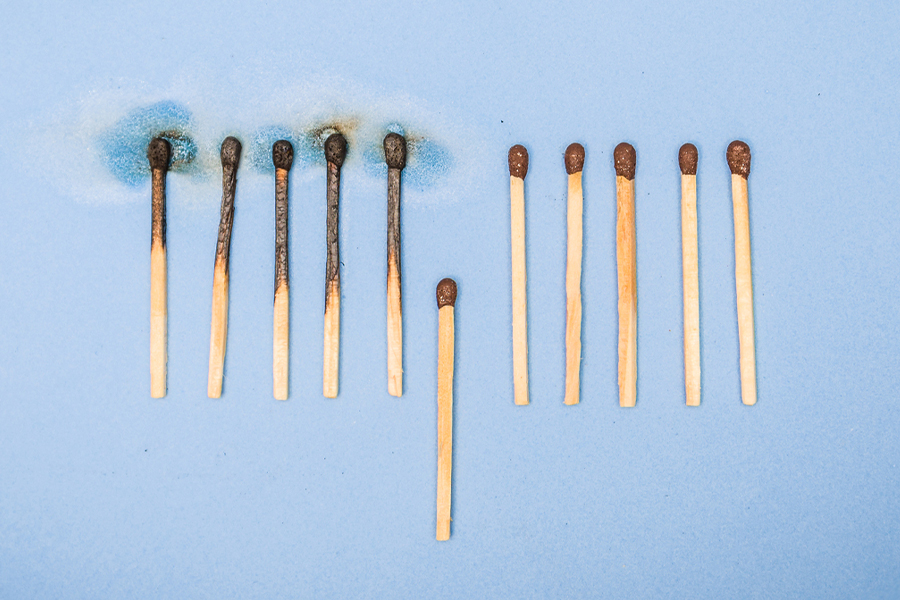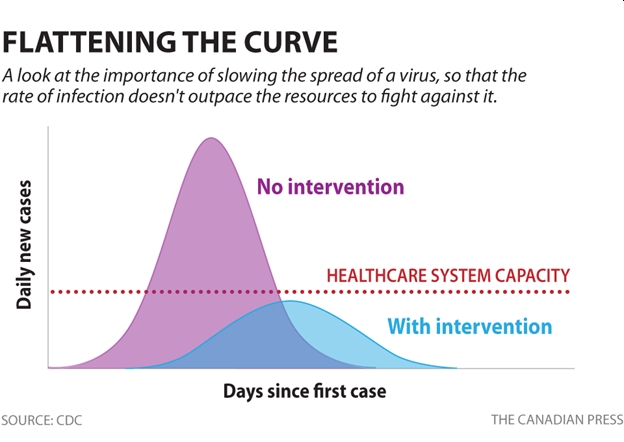
Social Distancing: A public tool to fight with COVID-19
What is Social Distancing?
As an important measure to slow the spread of coronavirus (Covid-19) pandemic, phrases like social distancing, self-quarantine, isolation along with the concept of flattening the curve are frequently heard in the media.
But what do they mean and why it is necessary? How the measures and decisions are taken?
In 1918, a deadly flu pandemic was observed in history which affected worldwide and was first identified in United States. During that time, about 500 million people were infected and the number of casualty was estimated to be at least 50 million worldwide with about 675,000 occurring in the United States alone. (Content source: Centers for Disease Control and Prevention, National Center for Immunization and Respiratory Diseases (NCIRD)). Philadelphia ignored warning of the spread of flu and hosted a parade which saw a rise in infected cases. Within weeks many lost their life with the outbreak. But 900 miles away St. Louis showed a different story. Within 2 days of detection, the city closed museums, schools, playgrounds, libraries, courts, and churches. Gatherings were restricted to a maximum of 20 people. This significant measure-now known as social distancing broke down the chain of death to nearly half.
So basically social distancing is actually increasing the physical space between people so that coronavirus does not spread causing illness. Under this restriction, people stay at home and only leave if they need to shop basic necessities or need medical help. They travel only when absolutely necessary. All non-essentials like, shopping malls, clubs, theatres, library, restaurants, museums, pools, playground, gymnasium etc are closed.
Why is Social Distancing necessary?
Social Distancing is necessary to limit the spread of covid-19 virus which is transmitted through droplets when the infected person coughs. When a healthy person inhales the droplets or touches an infected surface and touches their face with unwashed hand, they can get infected too. So lesser the time spent with covid-19 infected person, lesser the chance of spreading the illness.
Social Distancing is also necessary, as under the unavailability of proper cure and medicine, coronavirus spread can be limited. This helps to buy some more time to study the pandemic behavior and come out with proper vaccine and cure. Also a large number of sick people could be challenging for hospitals and medical practitioners to deal with.
What are Social Distancing measures and why it is used?
Social Distancing measures are taken to decide on when and where people can gather to stop or lessen the spread. These measures are used to avoid crowded gathering so that infection rate can be controlled and brought down. Health experts have studied past pandemics and found that spread of disease increased with gathering and organizing functions. During these pandemics, the highest affected were school children and elderly. Thus they believe that avoiding crowd would help lower the spread.
Decision making and objectives for Social Distancing measures
In a rapidly spreading situation, Social Distancing measures may be justified and implemented as a core response. Health authorities should ensure that decision makers understand the current scenarios related to Covid-19. These scenarios may include: the mode of transmission, how long a person needs to be exposed in order to be infected, the minimum infectious particle needed to be infected, degree of infectivity before showing symptoms, how long a person is infectious after recovery, seasonal affect of transmission and immune responses in humans.
Mathematical models and computer simulations can be used to support decision making. Right combination of available data, questions and mathematical model can lead to the right answer.
Public health authorities should also recognize the other factors like feasibility of implementing diagnosis, time pressure, economic interests, socio-political factors etc for social distancing interventions. Decision should therefore be evidence informed. Lesson from previous pandemics should also be taken into account during decision making and implementing.
The term Social Distancing refers to the effort of physically distancing people (6 feet away) with other probable infected person through various means to limit the spread of disease. There are several ways to Social Distancing measures like quarantine, self-isolation and can be categorized in layers. Each progressive layer contains all preventive measures of the previous layer. It is necessary to ensure people maintain physical distance but can remain social with friends and family through internet. The success of Social Distancing measure over an extended period depends on success of this measure.
What is self-quarantine?
Healthy people who might have come in contact with the covid-19 virus and are at risk of being infected should practice self-quarantine. Quarantine cases may be voluntary or mandatory depending on the degree of exposure to infected person and risk of being infected. The rationale behind self quarantine is that the person stays at the safety of their own home and self monitor the symptoms. The person should go for health checkup if symptoms are visible. Another point is to distancing from other people to prevent spread.
What is isolation?
When a confirmed infection case is seen, the person is separated from other healthy people. This is isolation. This may again be voluntary (stay at home for mild cases) or mandatory for confirmed cases. The mandatory isolation is that patients are hospitalized to provide care. The rationale again is to avoid transmission of disease to others.
Confirmed or doubt cases are isolated whereas general healthy person are quarantined. So here we see quarantine and isolation are different. During social distancing, people can utilize their leisure time to fulfill their hobbies which they had to postpone due to work commitments and busy schedule. General public health response for epidemics adapts the concept of flattening the curve. “Flattening the curve” refers to measures taken to slow the rate of transmission. Once the coronavirus can no longer be controlled, the goal is to slow its spread. Rapid growth in disease spread will leave doctors and health authorities struggling to provide medical assistance. With lesser sick people, it becomes easier to provide health service and limit the spread. It also provides time to study the covid-19 behavior and develop vaccines and future preventive strategies. Richard Hatchett, a physician and head of the Coalition for Epidemic Preparedness Innovations in London said, “Social distancing interventions were not always trusted, they were widely ignored during flu pandemics in 1957 and 1968”. But in the 2000s, several papers including Hatchett’s, reanalyzed Spanish flu data to show the efficiency of distancing measures. The US Centers for Disease Control and Prevention later incorporated them into their outbreak guidance. As per Hatchett, the key to social distancing is timing. The benefits of social distancing intervention are greatest when they are implemented and maintained early (before 1% of population is infected). Distancing measures are less effective when many people have contracted the disease. There is uncertainty over the effectiveness of various measures taken in social distancing to limit the spread of disease. The impact of such measures during the peak time and the initial spreading days depends on how early the measures were implemented. Moreover, implementing of multiple measures increases the effectiveness to limit the spread. There are no one-size-fits-all model and the measure and intensity of implementation depends on the spread. In the mean time, it is also expected that with the implementation of social distancing measure, an expected end date should be established and communicated. Depending on the circumstances the end date may be extended and some measures may be removed and some may remain in place. Future strategies should be planned and communicated. It should be made clear that large scale social distancing measures might also be implemented depending on the situation. In absence of vaccines and medicines, development of sufficient level on personal immunity is the only way to limit and decrease the transmission of coronavirus. When “herd immunity” is sufficient, social distancing measure become obsolete.Flattening the curve

When to initiate Social Distancing and exit strategy
Author –
Anju Ghosh
Program Coordinator(MBA)
LBEF Campus

